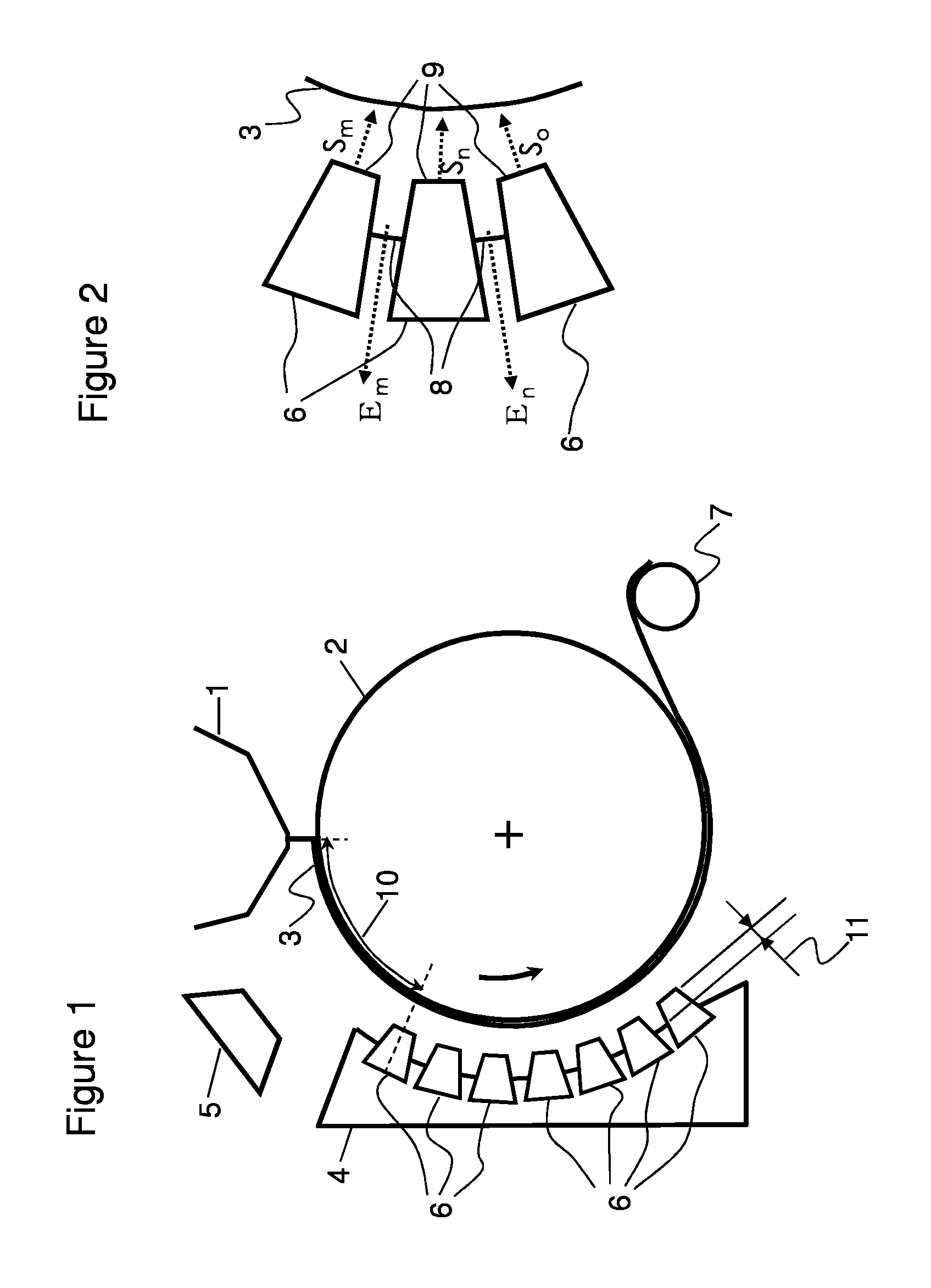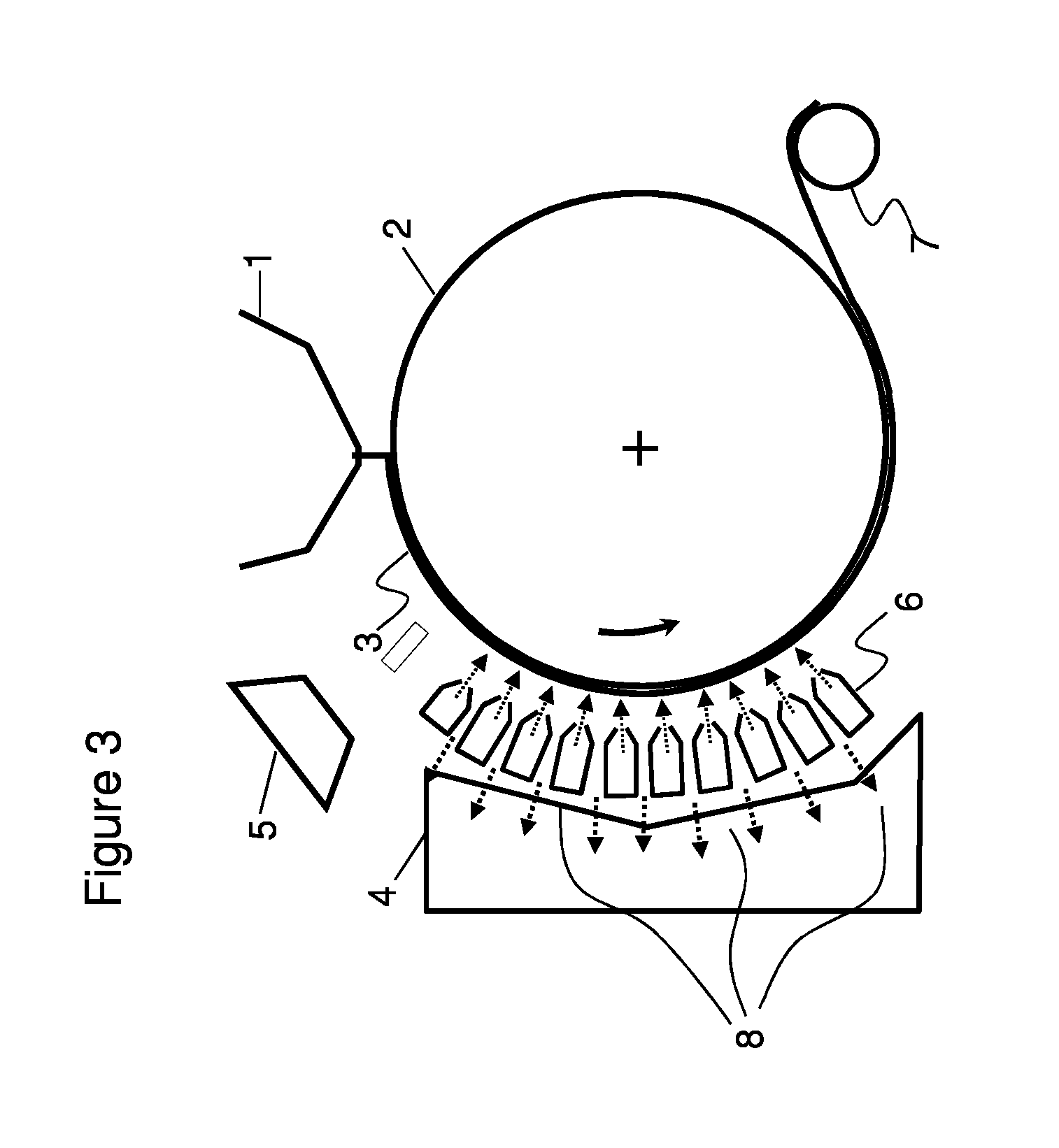Method and apparatus for producing a thermoplastic resin film
a thermoplastic resin and film technology, applied in the field of thermoplastic resin film methods and apparatuses, can solve the problems of foreign matter defects, the film temperature of the anti-cooling drum-side surface cannot easily be dropped to the desired temperature, and the film is difficult to clean, so as to reduce the damage caused by foreign matter defects, reduce production yield, and reduce foreign matter damage
- Summary
- Abstract
- Description
- Claims
- Application Information
AI Technical Summary
Benefits of technology
Problems solved by technology
Method used
Image
Examples
example 1
[0055]As the raw material of the polyester, pellets of polyethylene terephthalate resin (F20S produced by Toray Industries, Inc.) were dried under reduced pressure, supplied into an extruder, and melt-extruded at 280° C. It was brought into contact with a cooling drum (diameter 1,600 mm) kept at a surface temperature of 20° C. by an electrostatic application method, and simultaneously cooled and solidified using a cooling device, to obtain a thermoplastic resin film with a thickness of 2,100 μm.
[0056]The cooling device had a first spray nozzle disposed in the portion nearest to the extrusion die from which the thermoplastic resin was extruded, and the inter-nozzle exhaust mechanism was perfectly separated from the spray nozzles and installed apart from the rear faces of the spray nozzles by 50 mm. Therefore, the suction face of the inter-nozzle exhaust mechanism was perfectly apart from the tip faces of the spray nozzles, and there were through openings between the respective spray ...
example 2
[0062]Used was a cooling device having the suction faces of an inter-nozzle exhaust mechanism placed between the respective spray nozzles, in which the distance between the tip faces of the spray nozzles and the suction faces of the inter-nozzle exhaust mechanism was set at 100 mm. Therefore, the inter-nozzle exhaust mechanism was not separated from the spray nozzles, and there were no through openings between the respective spray nozzles. Except this configuration, polyester films rolls with a film thickness of 188 μm, a width of 1,000 mm and a length of 2,000 m were obtained as described in Example 1.
example 3
[0063]In the cooling step conditions, the total amount of sprayed air was 120 m3 / min and the total amount of sucked air was 70 m3 / min; hence total amount of sucked air / total amount of sprayed air=0.58. Further, the inter-nozzle exhaust mechanism was separated from the spray nozzles and installed behind the rear faces of the spray nozzles, and through openings were formed between the respective spray nozzles. Thus, polyester film rolls with a film thickness of 188 μm, a width of 1,000 mm and a length of 2,000 were obtained.
PUM
| Property | Measurement | Unit |
|---|---|---|
| thicknesses | aaaaa | aaaaa |
| thickness | aaaaa | aaaaa |
| width | aaaaa | aaaaa |
Abstract
Description
Claims
Application Information
 Login to View More
Login to View More - R&D
- Intellectual Property
- Life Sciences
- Materials
- Tech Scout
- Unparalleled Data Quality
- Higher Quality Content
- 60% Fewer Hallucinations
Browse by: Latest US Patents, China's latest patents, Technical Efficacy Thesaurus, Application Domain, Technology Topic, Popular Technical Reports.
© 2025 PatSnap. All rights reserved.Legal|Privacy policy|Modern Slavery Act Transparency Statement|Sitemap|About US| Contact US: help@patsnap.com



